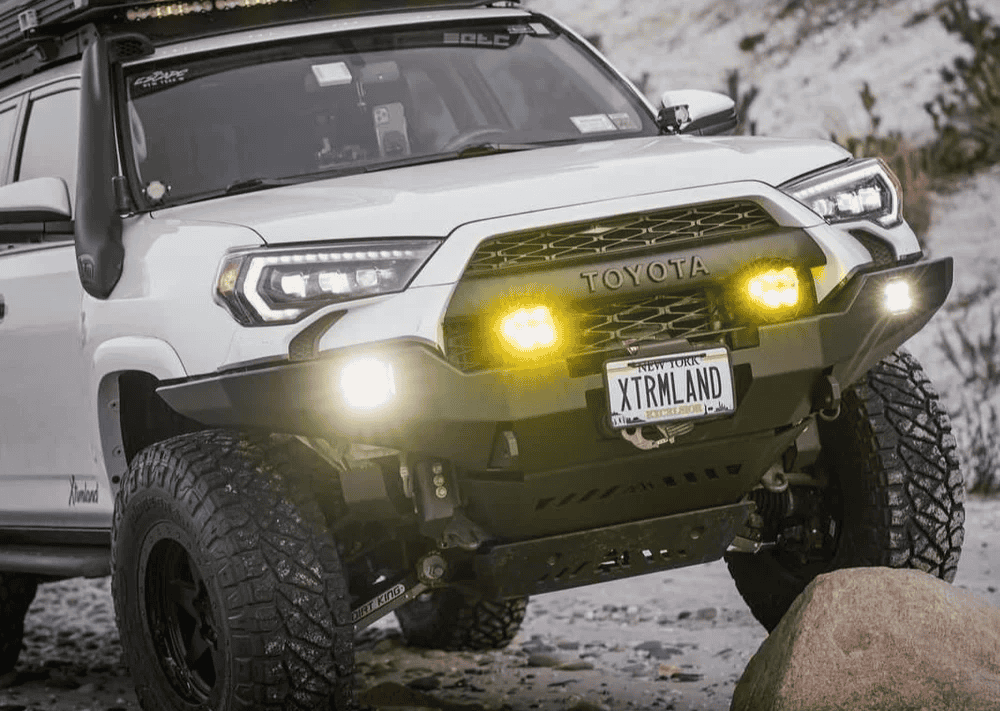Overland Vehicles

An off grid living vehicle is built to operate without shore power, city water, or campground hookups. It relies on an onboard electrical system, freshwater storage, waste management, safe heating and cooling strategies, and enough storage to live comfortably for days or weeks. The platform could be a high roof van, an overland pickup with a camper, or a well insulated towable designed for remote trails.
Key components work together. A balanced electrical system blends solar input, alternator charging, and a battery bank sized for your daily load. Water systems pair tank capacity with filtration and a simple way to manage grey and black waste. Insulation, ventilation, and moisture control protect the cabin and keep temperatures stable. When these systems are sized around your lifestyle, the vehicle feels like a tiny home that moves.
Start with your energy budget. Add up daily watt hours for refrigeration, lights, fans, pumps, devices, and climate control. That number drives battery capacity and solar sizing. Many travelers use a lithium battery bank with an inverter charger and roof mounted solar paired with an MPPT controller for efficient charging. Alternator charging through a DC to DC charger covers cloudy days and driving bursts. Reducing loads with efficient appliances often adds more real freedom than adding panels.
Water planning makes or breaks long stays. A simple setup includes a freshwater tank sized for your crew, a pump, drinking water filtration, and a grey tank with an easy drain strategy. Cooking drives both energy and moisture, so efficient induction or a contained stove with solid ventilation keeps condensation and odors in check. For sanitation, a cassette or composting toilet is common, and each has trade offs in maintenance and space.
Comfort depends on climate strategy. Vent fans move moisture and heat out fast. In cold weather, a sealed combustion heater that draws exterior air for burn keeps the cabin dry and safe. In heat, shade, airflow, and insulation reduce the need for energy hungry cooling. Every choice should minimize condensation, manage airflow, and keep the cabin livable in your target seasons.
Safety and legality matter. Keep weight under the platform’s gross rating, distribute heavy items low and centered, and secure everything that could move. Know local overnight rules and land use guidelines. Carry a well stocked recovery kit, a first aid kit, fire suppression, and a way to report your location if you lose signal.
Insulation is more than R value. You need thermal breaks, moisture management, and airflow. Use materials that resist vibration, handle condensation, and do not trap water against metal. Vent fans at the roof and low level intake help pull air through the cabin. A small DC air conditioner can work with a large battery bank, but most travelers combine shade, ventilation, and smart scheduling to keep energy draw in check.
Each platform changes how you travel. High roof vans offer stand up space, stealthy parking, and clean aerodynamics. They are great for extended road time and mixed climates when paired with good insulation and a thoughtful layout. Overland pickups with campers shine on rougher tracks, with improved approach angles, suspension options, and external gear storage. Towables keep the tow vehicle flexible and can be left at camp, but require careful attention to tongue weight, braking, and route planning.
Weight and wheelbase shape the layout. Short wheelbase vehicles fit tight trailheads but reduce tank size and storage. Long wheelbase rigs carry more but need careful weight distribution and reinforced suspension. Choose tires that match terrain and load, then add recovery points and lighting that support early starts and late arrivals. Plan serviceability too, from access panels for fuses and filters to clear wire labeling.
A good plan starts with a number and an exit strategy. Spend first on core systems that protect safety and reliability. Electrical and heating systems hold value when built to standards with clean documentation. Simple, durable finishes survive real mileage and look good years later. Keep records, photos, and manuals to support future service and resale.
As you consider a platform or layout, explore how purpose built overland systems translate to daily use. See how our approach to suspension, storage, and power comes together on the Overland rigs page. If you want a deeper dive into system design and integration, the Custom overland upfit overview shows how a cohesive plan turns ideas into miles. New to our shop and curious how we work with clients from first call to handoff. Visit Why choose OZK Customs to see our process and values.
Your route is unique. At OZK Customs in Fayetteville, Arkansas, we build complete adventure vans, overland trucks, and towable solutions that prioritize energy balance, safe heating, water management, and smart storage. Bring us your mileage goals, terrain, and climate, and we will translate that into a platform that feels right at home in the wild.
Wrap up your research with a plan that fits how you live. Share your travel patterns, gear, and seasons, and we will map the right platform, power system, and layout to keep you comfortable far from hookups.
Ready to map a real world, off grid build that fits your routes and routines. Tell us how you travel, and our team will translate that into a precise electrical system, smart storage, and a platform that drives like it was made for you. Share your goals in the form and we will come back with a clear path, timeline, and budget to get you rolling.
ADDRESS:
6159 E Huntsville Rd, Fayetteville, AR 72701
PHONE:
(479) 326-9200
EMAIL:
info@ozkvans.com